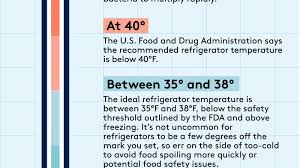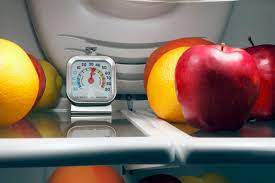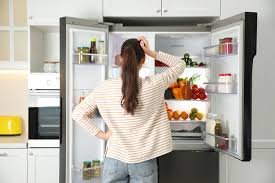What is the correct temperature for a fridge? We think you have asked yourself this question many times. Over time, we get so used to everyday things that we stop paying attention to things that seem obvious to us. It is obvious that your refrigerator is set to a certain temperature. But is it optimal? Is your refrigerator cold enough? How to correctly set the temperature in the refrigerator? How to use the refrigerator correctly to maintain this temperature and always have fresh products? We answer these and other questions in our article, keep reading!
What is the Correct Temperature for a Fridge?
A refrigerator is intended for short term storage of food and opening it often can affect the fresh food area’s temperature. You may find ice or frost builds up in the freezer compartment quickly, and the freezer may be too cold for a long term storage of frozen food. In the first use, it is recommended to have food items pre-chilled for at least 4 hours before putting inside your refrigerators refrigerator compartment.

The correct temperature for a fridge is 40 degrees Fahrenheit or below and no higher than 7 degrees for the freezer. It inhibits the growth of microorganisms that can cause foodborne illnesses, according to the FDA. The FDA recommends storing perishable foods in a fridge as soon as you can. Follow the two hour rule and do not leave foods that require refrigeration at room temperature for more than two hours.
How to Set Your Refrigerator Temperature
- Find the dial. To set the temperature of your fridge, firstly find the dial on it. Where it’s located may vary by refrigerator, but you should be able to find your control in the manual if the location is not clear.
- Measure the temperature inside. Place a reliable thermometer on the middle shelf of the refrigerator. AAfter a few hours, check the thermometer’s reading to make sure you have your refrigerator at the right temperature. It is especially helpful if you don’t have a digital display and can only adjust it on a dial.
- Make adjustments. Make small adjustments using the temperature control to find the right temperature for your refrigerator.
FDA Storage Basics
-
Refrigerate or freeze perishables right away. Fresh food items that need to be kept in the fridge should be crammed as soon as you get them home. Items being kept at room temperature for more than two hours should always be put in the fridge. to qualify as perishable, food must be able to sit out of refrigeration for up to two hours before there’s a significant chance that it would make someone sick. This also applies to leftovers, “doggie bags” or take-out foods that were brought into your home.

-
Make sure that when storing food in the fridge, you leave enough space for air to circulate.
-
Keep your appliances at the proper temperatures. Keep the refrigerator temperature at or below 40° F (4° C). The freezer temperature should be 0° F (-18° C).
-
Check storage directions on labels. Many items other than meats, vegetables, and dairy products need to be kept cold
-
Use ready-to-eat foods as soon as possible.
-
Be alert for spoiled food.
-
Be aware that food can make you very sick even when it doesn’t look, smell, or taste spoiled.
Tips to Keep Your Refrigerator Cool
It is important to minimise the exposure of your fridge and to close the doors. You can also take other steps such as rotating your produce once a week, not storing vegetables near each other or in plastic bags or boxes, resealing wet items to remove all traces of frost, using humidifiers (both inside and out)Let the air flow back behind the fridge by keeping a small gap between your fridge and the wall.
- Make sure your refrigerator is fully stocked so it uses less energy than if it was partially or mostly empty.
- Keep your fridge organized to avoid wasting time searching for food. Occasionally check the door seal to make sure it is airtight and that it doesn’t need to be replaced.
- Keep the condenser coils on the back of your fridge clean by vacuuming or brushing off any dust that may be built up.
- Keep your food fresher, longer to minimize moisture by using the humidity-controlled drawers in your refrigerator and by storing food in airtight containers.
- Keep the doors closed to keep your fridge cooler and make sure it is properly insulated from outside sources of heat.
- To further prevent heat, try turning the appliance off while you’re away on vacation, or when you’re at a holiday party.

Final Thoughts
According to the most commonly recommended refrigerator settings, a refrigerator should maintain a temperature of 40 degrees Fahrenheit for fresh foods and no higher than 7 degrees for the freezer. That reasures you are consuming fresh and unspoiled food, minimizing spoilage and food waste. Also you may check the tips on how to set the thermostat for your refrigerator and how to keeep your refrigerator working properly. This allows you to have your food and drinks fresh and unspoiled!
Contents
